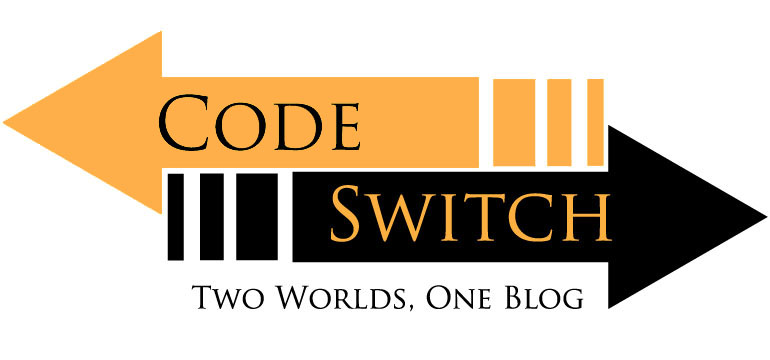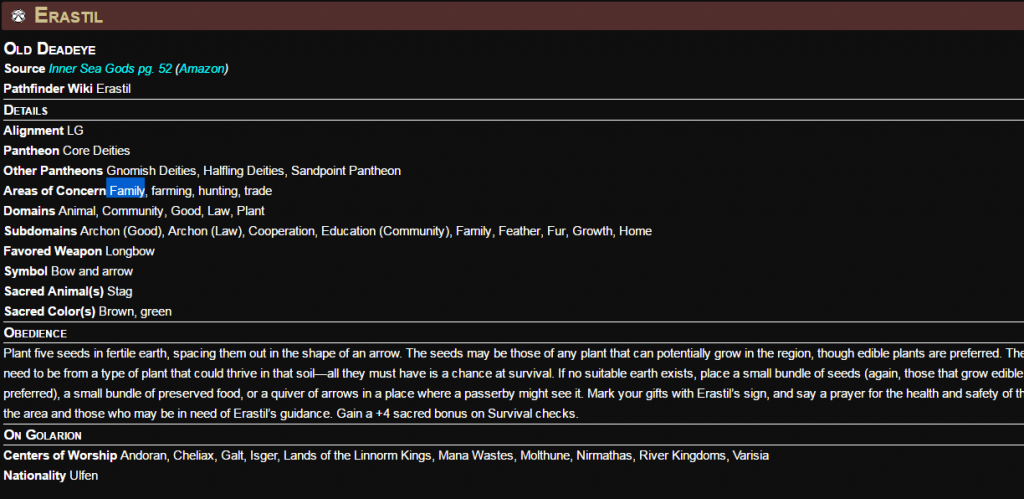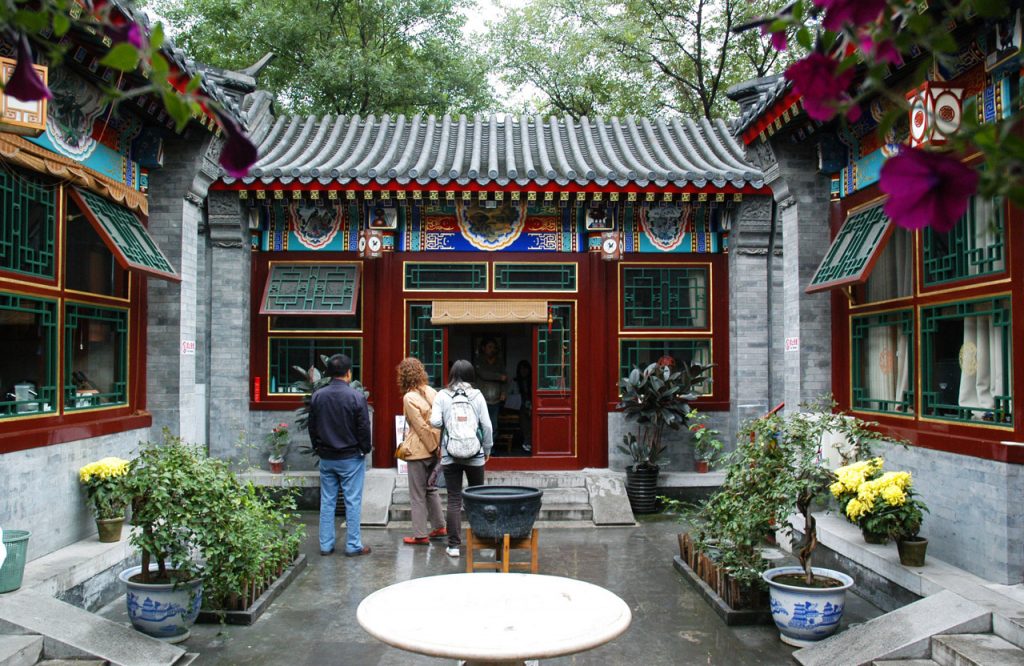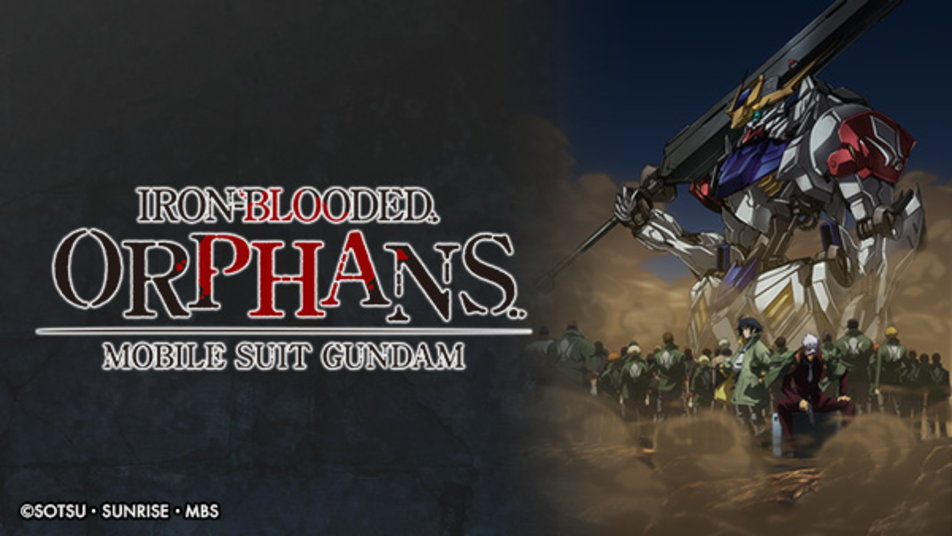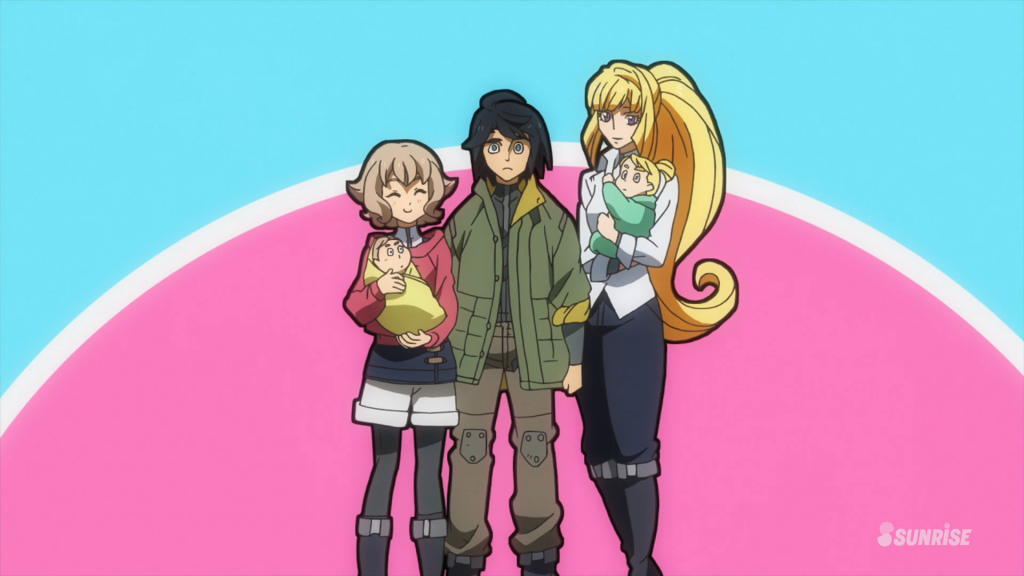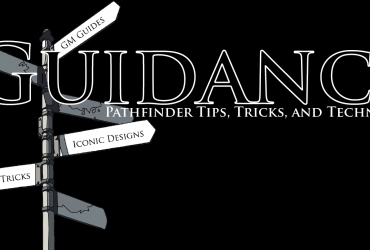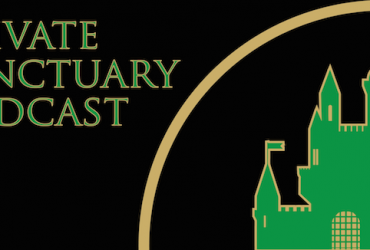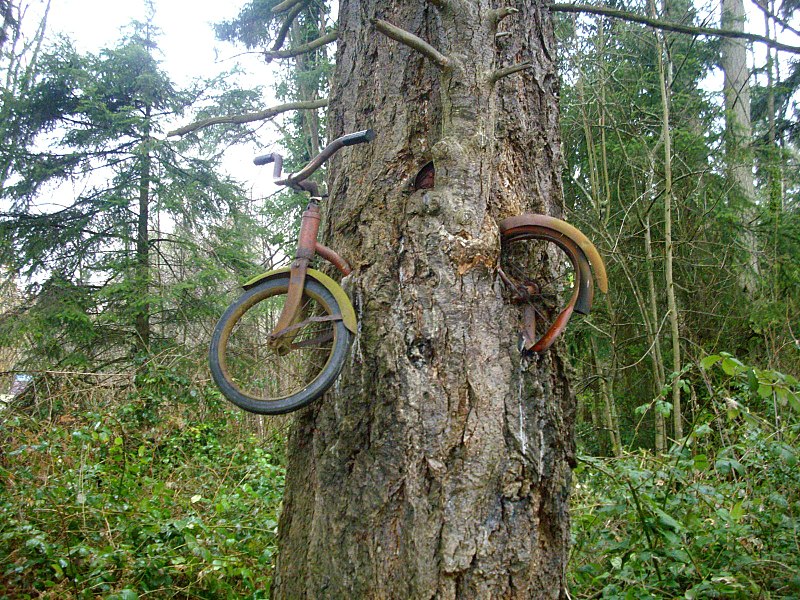Ohana Means Family and Family Never Gets Left Behind
What is a family? Is it a mother, father, 2.5 children and a dog? Is it grandmom, grandpop, and everyone else down? Is your community your family? I’ve been playing a Paladin a lot recently and it’s made me think about what constitutes a family and that’s what I’m going to talk about today.
Wait a Paladin of Family?
I’ve been playing a Paladin of Erastil a lot in Pathfinder Society recently, and her backstory is based around multiple communities coming together to overcome a threat and her becoming a Pathfinder was to try and encourage this type of collaborative problem solving on a larger scale. Lo’ and behold, the Pathfinder Society is filled with freaks. Coming from a homogeneous culture, seeing a society that employs elemental-kin and outsider-kin and animal races must come as a huge shock to many new Pathfinders. But, as a Paladin of Erastil a community is a community and is to be treasured even if it’s weird.
What Does the Pathfinder Society Have to do with Family?
It serves as an expansion point from family as a purely bloodline based institution to a more inclusive institution. A family is a group of people who spend time each other and care for the welfare of each other in this more inclusive definition of family. As an agent of the Pathfinder Society you enter into an occupation where you “work” out of a common lodge (Probably your local society chapter). The other agents are your co-workers, but your job is harder and more fantastical than any desk job and the bonds your characters form with other characters run deep. They’re people you come to care for, people whose lives you try to protection, and failing that people you send resources to revive if possible. That’s awfully family-like behavior isn’t it, caring for the welfare of people you spend time with?
But You Can Just Leave the Society, You Can’t Leave Family
Sadly, families in real life do cut ties and separate from each other. Alternatively, there’s probably non-blood related people in your life that feel like family to you. Using myself as an example I’ve been friends with a neighbor since we were in first grade and at my wedding during his best man speech he called me his brother, a feeling I reciprocate.
Nuclear-Family Alternatives
In real life, different cultures have different ideas about what composes a family. In touring China I visited hutong’s; a sort of gated community where families lived. The elders would live in the biggest part of the hutong and the youngest inhabiting the smallest with people advancing as they aged. A lot of hutongs housed seperate families, but others did hold just one family but the idea of a family was larger with grandparents and their children and grandchildren all living together if the hutong could support it.
In America the African-American family structure is often outside of the nuclear family institution. It includes a larger variety of extended family members involved in things like childcare and meal preparation. Grandparents are preferred to be kept living with the community in old age rather that going into institutionalized living.
In fiction there’s two examples of atypical families I want to highlight; one being Disney the other being anime.
Lilo & Stitch
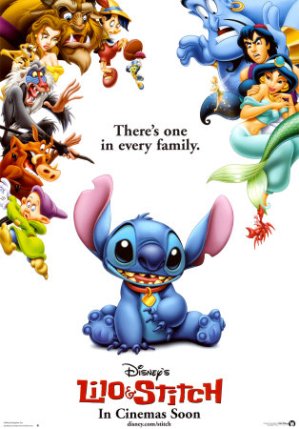 If you’ve never seen Lilo & Stitch it’s like Frankenstein with a happy ending. An alien experiment comes to Earth and is adopted as a dog by a family composed of an older sister watching a younger sister. Throughout the movie lessons about the importance of family (no matter how strange) is the primary device for conflicts and the resolutions of those conflicts. I Hope that was spoiler-free enough for a 14 year old Disney movie.
If you’ve never seen Lilo & Stitch it’s like Frankenstein with a happy ending. An alien experiment comes to Earth and is adopted as a dog by a family composed of an older sister watching a younger sister. Throughout the movie lessons about the importance of family (no matter how strange) is the primary device for conflicts and the resolutions of those conflicts. I Hope that was spoiler-free enough for a 14 year old Disney movie.
Mobile Suit Gundam: Iron-Blooded Orphans
This one isn’t a Disney story and despite the giant robot fights and hot, shirtless Channing Tatums the story is really about desperation. Earth has a monolithic and strict government to enforce peace and order, but space colonies are run by companies who are free to create their own laws. So in the bleakest way possible they enact the most profiteering laws with the fewest rights. Some far off colonies use extensive child labor forces and some more chillingly use child soldiers as part of private defense contractors. Children are snatched away from the poor or from orphanages to help fund these ventures. The shows protagonists come from these types of children known collectively a s “human debris”.
There’s a scene where 3 of the characters really sit down and talk about their backgrounds. One is a human debris Mikazuki, who has been a soldier since he was 8. Another Arta, was a human debris hired (and then adopted) by a kindly shopkeeper after being a brothel janitor at the age of 10. The last one is Kudelia, the daughter of a mining conglomerate whose achieved a Joan of Arc status among the poor as a revolutionary. Kudelia opens up to the others about her cold upbringing and envy of the bond all the human debris have. Arta bring the sappy sort (who also has a crush on Mikazuki) offers Kudelia the honest opportunity to join their family. This is offered without any underhanded or lewd motives, just with the gift of belonging.
Families in Pathfinder
With so many variations on family in real life and fiction Pathfinder and Golarion should be able to offer an infinite variety of family arrangements which can create fun variation for your players. It may also encourage your players to open up with family in backstory. In a home game I briefly ran I had 4 out of 5 players whose characters were orphans at a young age. Also playing a character with a diverse family provides ample opportunity for fun roleplaying and GM interactions. So before you kill your parents to become the orphan squad, think of how diverse families can be and make your aunt and uncle your parents, Luke.

